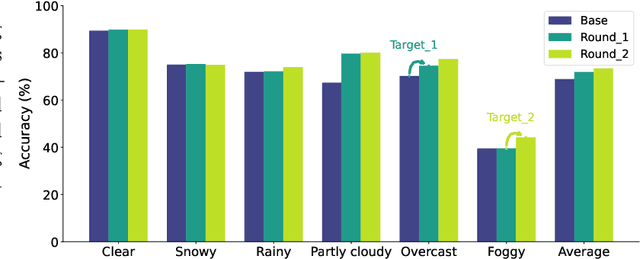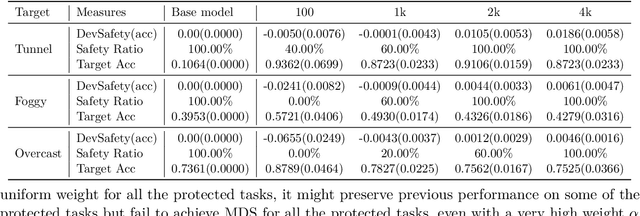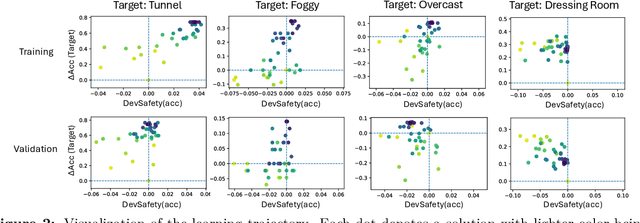Yao Yao
Dennis
FB-4D: Spatial-Temporal Coherent Dynamic 3D Content Generation with Feature Banks
Mar 26, 2025Abstract:With the rapid advancements in diffusion models and 3D generation techniques, dynamic 3D content generation has become a crucial research area. However, achieving high-fidelity 4D (dynamic 3D) generation with strong spatial-temporal consistency remains a challenging task. Inspired by recent findings that pretrained diffusion features capture rich correspondences, we propose FB-4D, a novel 4D generation framework that integrates a Feature Bank mechanism to enhance both spatial and temporal consistency in generated frames. In FB-4D, we store features extracted from previous frames and fuse them into the process of generating subsequent frames, ensuring consistent characteristics across both time and multiple views. To ensure a compact representation, the Feature Bank is updated by a proposed dynamic merging mechanism. Leveraging this Feature Bank, we demonstrate for the first time that generating additional reference sequences through multiple autoregressive iterations can continuously improve generation performance. Experimental results show that FB-4D significantly outperforms existing methods in terms of rendering quality, spatial-temporal consistency, and robustness. It surpasses all multi-view generation tuning-free approaches by a large margin and achieves performance on par with training-based methods.
Can Multi-modal (reasoning) LLMs work as deepfake detectors?
Mar 25, 2025Abstract:Deepfake detection remains a critical challenge in the era of advanced generative models, particularly as synthetic media becomes more sophisticated. In this study, we explore the potential of state of the art multi-modal (reasoning) large language models (LLMs) for deepfake image detection such as (OpenAI O1/4o, Gemini thinking Flash 2, Deepseek Janus, Grok 3, llama 3.2, Qwen 2/2.5 VL, Mistral Pixtral, Claude 3.5/3.7 sonnet) . We benchmark 12 latest multi-modal LLMs against traditional deepfake detection methods across multiple datasets, including recently published real-world deepfake imagery. To enhance performance, we employ prompt tuning and conduct an in-depth analysis of the models' reasoning pathways to identify key contributing factors in their decision-making process. Our findings indicate that best multi-modal LLMs achieve competitive performance with promising generalization ability with zero shot, even surpass traditional deepfake detection pipelines in out-of-distribution datasets while the rest of the LLM families performs extremely disappointing with some worse than random guess. Furthermore, we found newer model version and reasoning capabilities does not contribute to performance in such niche tasks of deepfake detection while model size do help in some cases. This study highlights the potential of integrating multi-modal reasoning in future deepfake detection frameworks and provides insights into model interpretability for robustness in real-world scenarios.
LESA: Learnable LLM Layer Scaling-Up
Feb 19, 2025Abstract:Training Large Language Models (LLMs) from scratch requires immense computational resources, making it prohibitively expensive. Model scaling-up offers a promising solution by leveraging the parameters of smaller models to create larger ones. However, existing depth scaling-up methods rely on empirical heuristic rules for layer duplication, which result in poorer initialization and slower convergence during continual pre-training. We propose \textbf{LESA}, a novel learnable method for depth scaling-up. By concatenating parameters from each layer and applying Singular Value Decomposition, we uncover latent patterns between layers, suggesting that inter-layer parameters can be learned. LESA uses a neural network to predict the parameters inserted between adjacent layers, enabling better initialization and faster training. Experiments show that LESA outperforms existing baselines, achieving superior performance with less than half the computational cost during continual pre-training. Extensive analyses demonstrate its effectiveness across different model sizes and tasks.
Matrix3D: Large Photogrammetry Model All-in-One
Feb 11, 2025Abstract:We present Matrix3D, a unified model that performs several photogrammetry subtasks, including pose estimation, depth prediction, and novel view synthesis using just the same model. Matrix3D utilizes a multi-modal diffusion transformer (DiT) to integrate transformations across several modalities, such as images, camera parameters, and depth maps. The key to Matrix3D's large-scale multi-modal training lies in the incorporation of a mask learning strategy. This enables full-modality model training even with partially complete data, such as bi-modality data of image-pose and image-depth pairs, thus significantly increases the pool of available training data. Matrix3D demonstrates state-of-the-art performance in pose estimation and novel view synthesis tasks. Additionally, it offers fine-grained control through multi-round interactions, making it an innovative tool for 3D content creation. Project page: https://nju-3dv.github.io/projects/matrix3d.
Flow Distillation Sampling: Regularizing 3D Gaussians with Pre-trained Matching Priors
Feb 11, 2025Abstract:3D Gaussian Splatting (3DGS) has achieved excellent rendering quality with fast training and rendering speed. However, its optimization process lacks explicit geometric constraints, leading to suboptimal geometric reconstruction in regions with sparse or no observational input views. In this work, we try to mitigate the issue by incorporating a pre-trained matching prior to the 3DGS optimization process. We introduce Flow Distillation Sampling (FDS), a technique that leverages pre-trained geometric knowledge to bolster the accuracy of the Gaussian radiance field. Our method employs a strategic sampling technique to target unobserved views adjacent to the input views, utilizing the optical flow calculated from the matching model (Prior Flow) to guide the flow analytically calculated from the 3DGS geometry (Radiance Flow). Comprehensive experiments in depth rendering, mesh reconstruction, and novel view synthesis showcase the significant advantages of FDS over state-of-the-art methods. Additionally, our interpretive experiments and analysis aim to shed light on the effects of FDS on geometric accuracy and rendering quality, potentially providing readers with insights into its performance. Project page: https://nju-3dv.github.io/projects/fds
JAMMit! Monolithic 3D-Printing of a Bead Jamming Soft Pneumatic Arm
Feb 05, 2025Abstract:3D-printed bellow soft pneumatic arms are widely adopted for their flexible design, ease of fabrication, and large deformation capabilities. However, their low stiffness limits their real-world applications. Although several methods exist to enhance the stiffness of soft actuators, many involve complex manufacturing processes not in line with modern goals of monolithic and automated additive manufacturing. With its simplicity, bead-jamming represents a simple and effective solution to these challenges. This work introduces a method for monolithic printing of a bellow soft pneumatic arm, integrating a tendon-driven central spine of bowl-shaped beads. We experimentally characterized the arm's range of motion in both unjammed and jammed states, as well as its stiffness under various actuation and jamming conditions. As a result, we provide an optimal jamming policy as a trade-off between preserving the range of motion and maximizing stiffness. The proposed design was further demonstrated in a switch-toggling task, showing its potential for practical applications.
MCMat: Multiview-Consistent and Physically Accurate PBR Material Generation
Dec 18, 2024



Abstract:Existing 2D methods utilize UNet-based diffusion models to generate multi-view physically-based rendering (PBR) maps but struggle with multi-view inconsistency, while some 3D methods directly generate UV maps, encountering generalization issues due to the limited 3D data. To address these problems, we propose a two-stage approach, including multi-view generation and UV materials refinement. In the generation stage, we adopt a Diffusion Transformer (DiT) model to generate PBR materials, where both the specially designed multi-branch DiT and reference-based DiT blocks adopt a global attention mechanism to promote feature interaction and fusion between different views, thereby improving multi-view consistency. In addition, we adopt a PBR-based diffusion loss to ensure that the generated materials align with realistic physical principles. In the refinement stage, we propose a material-refined DiT that performs inpainting in empty areas and enhances details in UV space. Except for the normal condition, this refinement also takes the material map from the generation stage as an additional condition to reduce the learning difficulty and improve generalization. Extensive experiments show that our method achieves state-of-the-art performance in texturing 3D objects with PBR materials and provides significant advantages for graphics relighting applications. Project Page: https://lingtengqiu.github.io/2024/MCMat/
4D SlingBAG: spatial-temporal coupled Gaussian ball for large-scale dynamic 3D photoacoustic iterative reconstruction
Dec 05, 2024Abstract:Large-scale dynamic three-dimensional (3D) photoacoustic imaging (PAI) is significantly important in clinical applications. In practical implementations, large-scale 3D real-time PAI systems typically utilize sparse two-dimensional (2D) sensor arrays with certain angular deficiencies, necessitating advanced iterative reconstruction (IR) algorithms to achieve quantitative PAI and reduce reconstruction artifacts. However, for existing IR algorithms, multi-frame 3D reconstruction leads to extremely high memory consumption and prolonged computation time, with limited consideration of the spatial-temporal continuity between data frames. Here, we propose a novel method, named the 4D sliding Gaussian ball adaptive growth (4D SlingBAG) algorithm, based on the current point cloud-based IR algorithm sliding Gaussian ball adaptive growth (SlingBAG), which has minimal memory consumption among IR methods. Our 4D SlingBAG method applies spatial-temporal coupled deformation functions to each Gaussian sphere in point cloud, thus explicitly learning the deformations features of the dynamic 3D PA scene. This allows for the efficient representation of various physiological processes (such as pulsation) or external pressures (e.g., blood perfusion experiments) contributing to changes in vessel morphology and blood flow during dynamic 3D PAI, enabling highly efficient IR for dynamic 3D PAI. Simulation experiments demonstrate that 4D SlingBAG achieves high-quality dynamic 3D PA reconstruction. Compared to performing reconstructions by using SlingBAG algorithm individually for each frame, our method significantly reduces computational time and keeps a extremely low memory consumption. The project for 4D SlingBAG can be found in the following GitHub repository: \href{https://github.com/JaegerCQ/4D-SlingBAG}{https://github.com/JaegerCQ/4D-SlingBAG}.
FATE: Full-head Gaussian Avatar with Textural Editing from Monocular Video
Nov 23, 2024



Abstract:Reconstructing high-fidelity, animatable 3D head avatars from effortlessly captured monocular videos is a pivotal yet formidable challenge. Although significant progress has been made in rendering performance and manipulation capabilities, notable challenges remain, including incomplete reconstruction and inefficient Gaussian representation. To address these challenges, we introduce FATE, a novel method for reconstructing an editable full-head avatar from a single monocular video. FATE integrates a sampling-based densification strategy to ensure optimal positional distribution of points, improving rendering efficiency. A neural baking technique is introduced to convert discrete Gaussian representations into continuous attribute maps, facilitating intuitive appearance editing. Furthermore, we propose a universal completion framework to recover non-frontal appearance, culminating in a 360$^\circ$-renderable 3D head avatar. FATE outperforms previous approaches in both qualitative and quantitative evaluations, achieving state-of-the-art performance. To the best of our knowledge, FATE is the first animatable and 360$^\circ$ full-head monocular reconstruction method for a 3D head avatar. The code will be publicly released upon publication.
Model Developmental Safety: A Safety-Centric Method and Applications in Vision-Language Models
Oct 13, 2024



Abstract:In the real world, a learning-enabled system usually undergoes multiple cycles of model development to enhance the system's ability to handle difficult or emerging tasks. This continual model development process raises a significant issue that the model development for acquiring new or improving existing capabilities may inadvertently lose capabilities of the old model, also known as catastrophic forgetting. Existing continual learning studies focus on mitigating catastrophic forgetting by trading off performance on previous tasks and new tasks to ensure good average performance. However, they are inadequate for many applications especially in safety-critical domains, as failure to strictly preserve the performance of the old model not only introduces safety risks and uncertainties but also imposes substantial expenses in the re-improving and re-validation of existing properties. To address this issue, we introduce model developmental safety as a guarantee of a learning system such that in the model development process the new model should strictly preserve the existing protected capabilities of the old model while improving its performance on target tasks. To ensure the model developmental safety, we present a safety-centric framework by formulating the model developmental safety as data-dependent constraints. Under this framework, we study how to develop a pretrained vision-language model (aka the CLIP model) for acquiring new capabilities or improving existing capabilities of image classification. We propose an efficient constrained optimization algorithm with theoretical guarantee and use its insights to finetune a CLIP model with task-dependent heads for promoting the model developmental safety. Our experiments on improving vision perception capabilities on autonomous driving and scene recognition datasets demonstrate the efficacy of the proposed approach.
 Add to Chrome
Add to Chrome Add to Firefox
Add to Firefox Add to Edge
Add to Edge